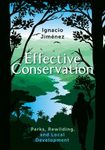By: Klaus von Gadow(Author), Juan Gabriel Álvarez González(Author), Chunyu Zhang(Author), Timo Pukkala(Author), Zhao Xiuhai(Author)
417 pages, 138 colour & 128 b/w illustrations
![Sustaining Forest Ecosystems Sustaining Forest Ecosystems]()
Click to have a closer look
About this book
Contents
Customer reviews
Biography
Related titles
About this book
Forest ecosystems include a great variety of communities of organisms interacting with their physical environment: multi-aged natural forests, even-aged monocultures, and secondary forests invaded by foreign species. The challenge is to sustain their ability to function, by adapting to changing climates and satisfying a multitude of human demands. Our first chapter sets the scene with a discussion about the effects of forest management on ecosystem services. Details about forest observational infrastructures are introduced in the second chapter. The third chapter presents methods of analysing forest density and structure. Models for estimating the shape and growth of individual forest trees are introduced in chapter 4, models of forest community production in chapter 5. Methods and examples of sustainable forest design are covered in chapter 6. New scientific contributions continue to emerge as we are writing, and this work is never finished. We hope to continue with regular updates replacing obsolete sections with new ones, but the general aim remains the same, to introduce a range of methods that will assist those interested in sustaining forest ecosystems.
Contents
- What is a Forest?
- Classification of Plant Communities
- Popular Myths
- Forest Anthromes: Domesticated Ecosystems
- Forest Assessment and Observation
- Forest Assessment
- Field Experiments
- Continuous Forest Observation
- Analysing Forest Ecosystems
- Forest Heterogeneity and Structure
- The Shape and Growth of Forest Trees
- Forest Production
- Designing Forest Ecosystems
Literature
Index
Customer Reviews
Biography
Klaus von Gadow has been teaching forest management at the Universities of Stellenbosch in South Africa and Göttingen in Germany. After his retirement in 2006, Beijing has become his third academic home where his research focus included aspects of quantitative ecology.
Chunyu Zhang is a professor of forest management at the Beijing Forestry University. The focus of his research is numerical ecology with particular emphasis on biodiversity, ecosystem productivity and forest modelling.
Juan Gabriel Álvarez González is a professor of forest biometrics at the University of Santiago de Compostela in Spain. Among his path-breaking achievements are compatible biomass systems and simultaneous modelling of tree growth and forest production.
Timo Pukkala is a professor in the Department of Forest Sciences at the University of Eastern Finland. He has extensive experience in forest modelling with a particular emphasis on ecosystem design. Timo developed the well-known MONSU system of forest planning.
Xiuhai Zhao is a professor of forest ecology who established a unique network of very large stem-mapped forest plots covering the major forest ecosystems in China. He is a recognized scientific leader who attracts a great number of talented students to his large research team.
By: Klaus von Gadow(Author), Juan Gabriel Álvarez González(Author), Chunyu Zhang(Author), Timo Pukkala(Author), Zhao Xiuhai(Author)
417 pages, 138 colour & 128 b/w illustrations















































